Last weekend I picked up some aluminum block at The Yard, an aircraft (and miscellaneous) surplus and supply store in Wichita, for an upcoming project. I also picked up aluminum polishing supplies at Autozone based on the experienced recommendation of the shift manager with a very shiny motorcycle outside.
Here’s a first pass at cleaning and polishing a block using materials I had around the house. The polished surfaces really highlight which stages of sanding needed more work — at a minimum, not skipping from 220 to 600 grit (I don’t seem to have any 400) and continuing up to 1500 — which was largely the point of this test. No need to point out my errors; I already know.
Tomorrow night I’m having supper at a machinist’s house, and I hope he may be able to do some surface cleanup for me before I redo this block and tackle the other three.
And by the way, the Mothers polish has a smell like vaguely lime-scented floor cleaner that takes me straight back to a Colorado Springs Popeye’s Chicken restaurant on vacation in the late 1970s. Smell is the sense with the strongest link to memory.
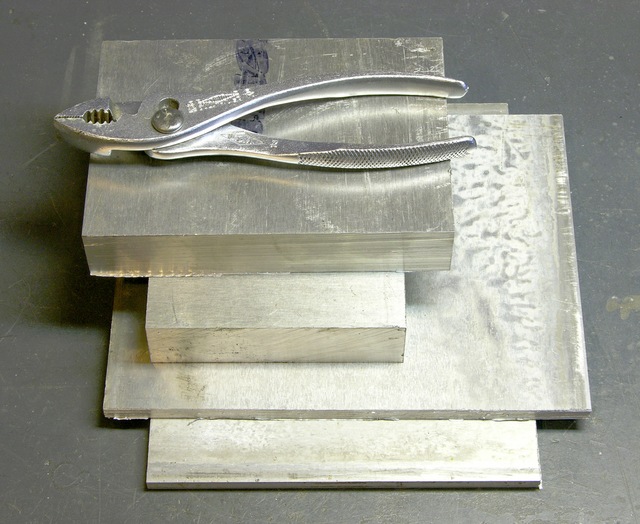
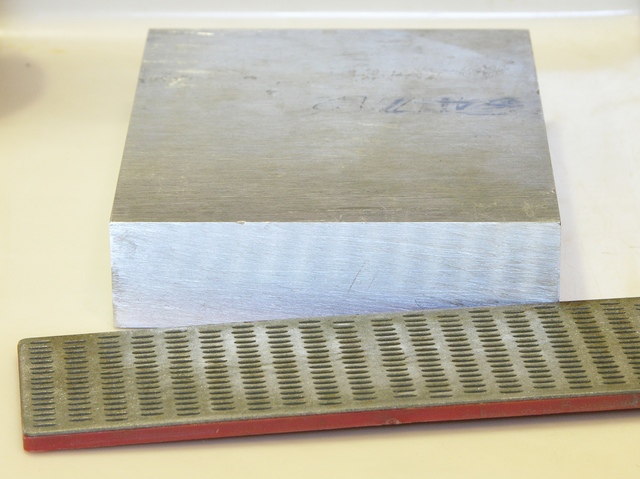
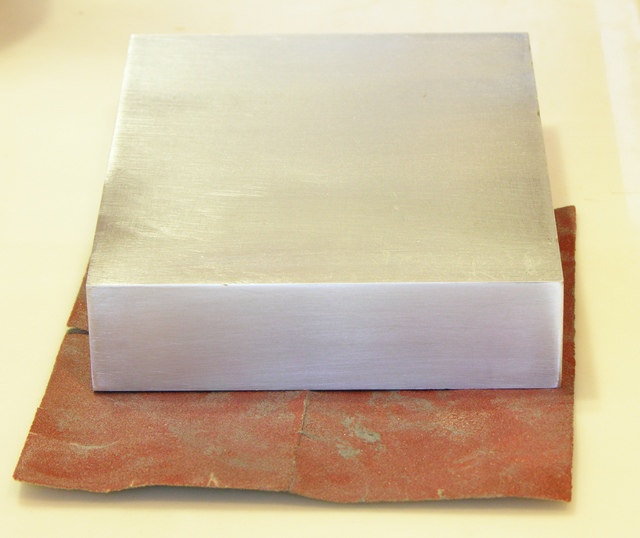
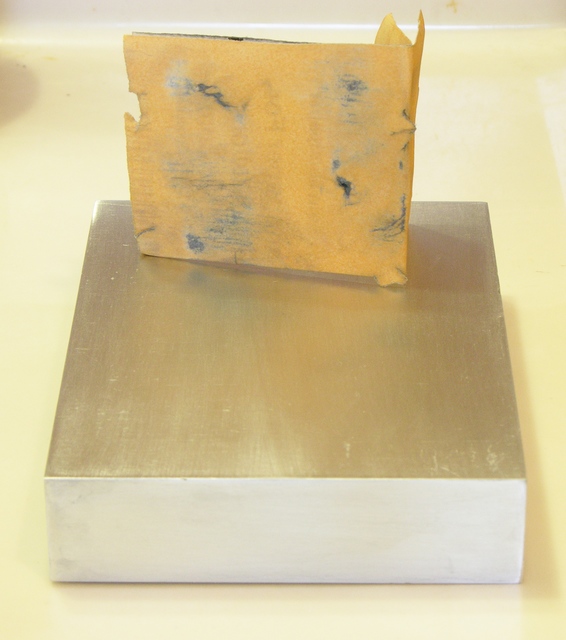
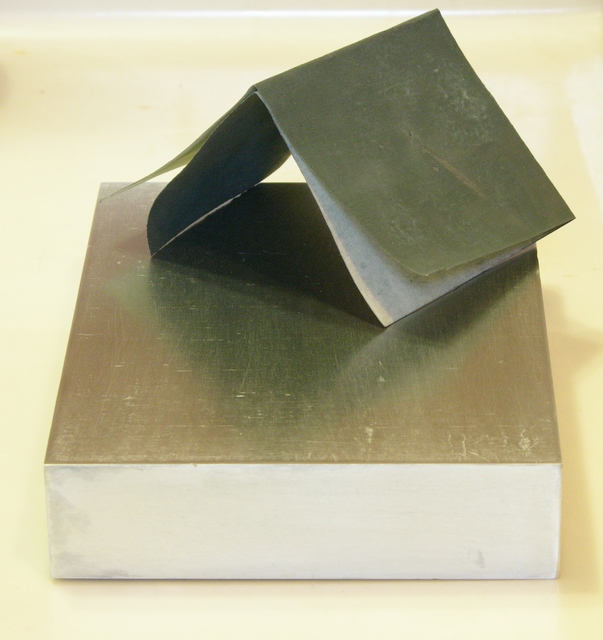
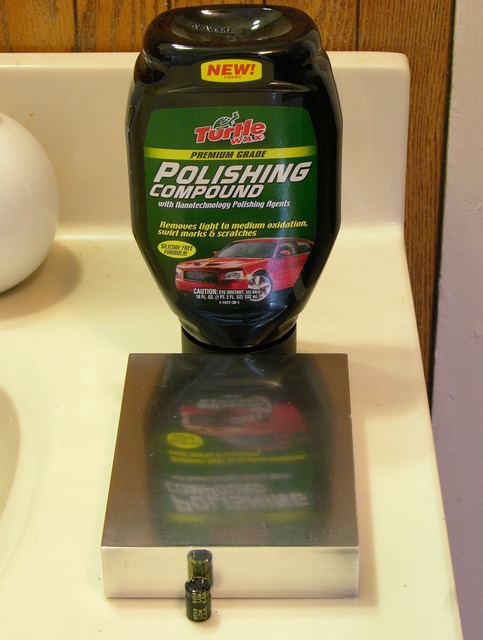
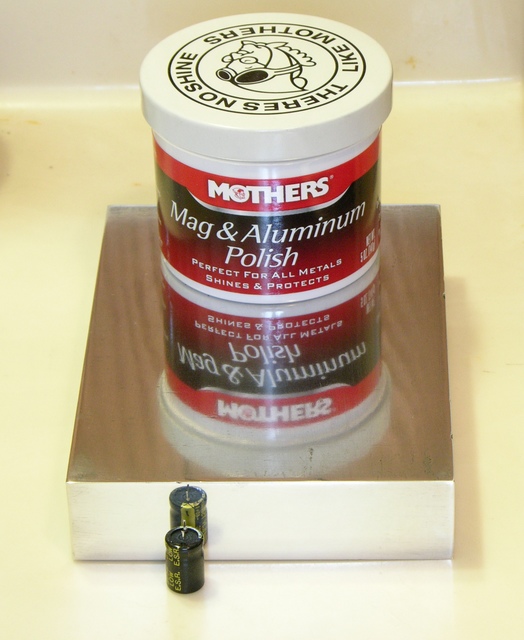
new hobby? or planning something far more sinister?
Matt, what could possibly be sinister about aluminum? Eh?
No, I don’t consider metal polishing to be a hobby — this is directed toward a different end. And there’s one person outside my circle of immediate friends who already knows what it is, and another who could figure it out because he gave me a virtual introduction to the person who knows.
— this is directed toward a different end. And there’s one person outside my circle of immediate friends who already knows what it is, and another who could figure it out because he gave me a virtual introduction to the person who knows.
More will be revealed in due time . . . like maybe later this afternoon.
Sinister about Aluminum? You’ve got to be kidding, right? Mix a bit of the Aluminum dust with some Iron rust, and you have thermite. Just be Real Careful where you set it off. Once ignited, that stuff is almost impossible to put out (and produces molten Iron).
Or, dissolve a bit of the Aluminum in Mercury, and away you go with heat, flames, and vapourized Mercury.
Aluminum is an exceptionally energetic material when mixed with Oxygen (or air). Fortunately, it usually forms an invisible, thin oxide layer immediately upon exposure to air. However, finely divided and heated (as in thermite) it reacts so strongly that it rips the Oxygen from the Iron rust as it oxidizes, and releases so much heat that the now non-oxidized Iron is melted [1]. When dissolved in Mercury, it can’t form the protective oxide layer, and proceeds to oxidize quite rapidly.
[1] My dad ran into an interesting situation once in a machine shop that was under him. It seems that the machinists had been machining a lot of Aluminum and steel (Iron) over the previous few years, and collecting the turnings in a large (55 gallon) drum. When the drum was full, it was set out on a uncovered loading dock, where it collected rain water. This caused the steel (Iron) to rust. The result was a 400 pound batch of improvised thermite! Oh, and, as the steel (Iron) was rusting, it produced enough heat that the water was starting to boil off. I wonder how many other machine shops around the world have improvised their own massive amounts of thermite in this manner? Toss in some Magnesium turnings and a few sparks, or a bit of Potassium Permanganate and a bit of glycerine or ethylene glycol (antifreeze), and you could have a real fireworks show right in the machine shop!
http://en.wikipedia.org/wiki/Thermite
But, back to more non-sinister things with Aluminum. You might take a clue from some amateur telescope makers that use polished Aluminum for telescope mirrors (although I believe that a lot of these are made by vacuum evaporating/depositing Aluminum on a glass substrate).
Dave
The Big Tool Store in Derby has emery paper into the 2000 range with the paint supplies.
When polishing aluminum you will keep getting new scratches from the accumulated aluminum oxide (the black stuff) which is much harder than the metal. Wet sanding will help a lot to keep particles of oxide from building up on the paper. I have also had good luck using rubber cement to glue the paper to aluminum strips to keep it flat; folds will scratch. When using the Mothers, use plenty of polish so it doesnt dry out and scratch. Also, use soft scrap leather with the polish instead of cloth.
If you want a mirror polish, but dont need an optically flat surface, you can use a fine rubber wheel to polish out scratches, gives a bright surface, but slightly wavy when polished.
Aluminum and stainless are the worst to polish because you cant just buff out the scratches like on brass or silver. FYI, you wet sand stainless also, but it takes a completely different set of tricks to get a mirror polish. I had to resort to wheels intended for polishing platinum….
Rio Grande jewelers supply has some nifty Scotch Brite wheels and special dremel points if you need to speed things up. I generally prefer to sand by hand then use a powered wheel to polish. But with the scotchbrite wheels you can get 90% of the quality in say 5 minutes.